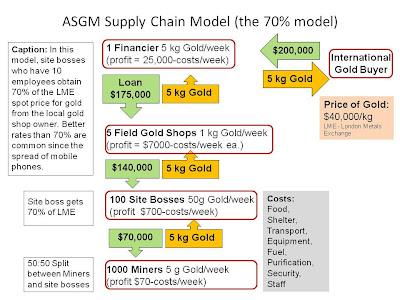Fifty thousand gold shops in the world's artisanal gold supply chain

There are approximately 50,000 small gold shops serving artisanal and small scale gold miners worldwide. They are a doorway to engaging artisanal gold mining communities and they are the first link of many in the artisanal gold supply chain to consumers. by Kevin Telmer, Artisanal Gold Council Gold shops and the supply chain Small informal gold shops are common in artisanal and small scale mining communities. After the miners, they are the next link downstream in the informal gold supply chain. They process raw gold or gold-mercury amalgam and then buy the raw gold product from miners at a price that is typically based on the London fix. This price is well known by both the miners and the shop owners due to mobile phones. Some shop owners will also refine the gold to close to 24 k purity (>99%) before selling it to the next level up in the supply chain. This is often done using the quartering technique which involves creating an alloy with silver and then digestion in nitri